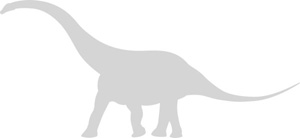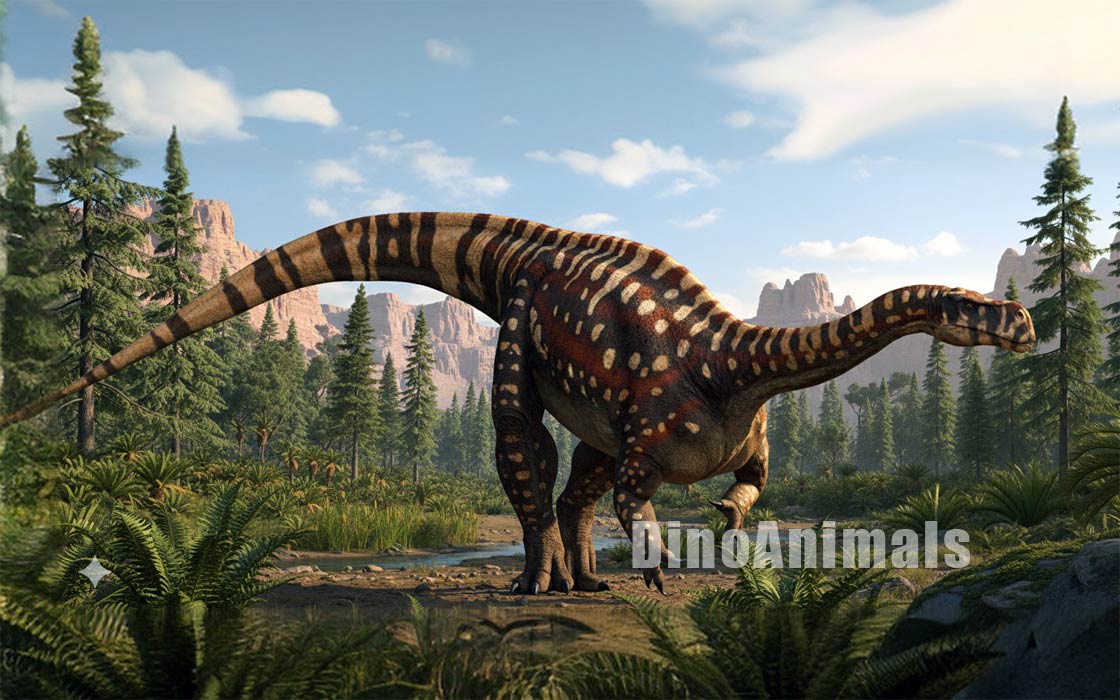Every month, 100,000 readers use the Dinosaur Database, but we receive no support from you. Developing and updating the database requires a lot of work. If you want it to remain open and be updated, please support us via the "Buy us a coffee" button available on every page or via the Support page.
Dinosaur: Aardonyx celestae

| Length*: | 8.7 m | 28.5 ft |
| Weight*: | 1.7 t | 3,748 lb |
*The largest known specimen
Period
Epoch: Early Jurassic
Stage: Hettangian-Sinemurian
Years: 201.3–190.8 Ma
Details
Status: valid
Author: Yates et al.
Year: 2009
Distribution
Area: Africa
Country: South Africa
Region: Free State
Formation: Upper Elliot
Description
Aardonyx celestae
Aardonyx celestae was a mid-sized herbivorous dinosaur that lived around 195 million years ago during the Early Jurassic period. Its name, meaning “Earth claw,” comes from the Afrikaans word “aard” (earth) and the Greek “onyx” (claw), referring to its robust feet. Discovered in South Africa, Aardonyx provides a key link in the evolutionary transition from smaller, bipedal dinosaurs to the massive, quadrupedal sauropods that would dominate later in the Jurassic period.
Physical Characteristics
Aardonyx celestae measured up to 8.7 meters (28.5 ft) in length and stood roughly 1.5 meters (5 feet) tall at the hips, with an estimated weight of around up to 1.7 tons (3,748 pounds). It had a long neck and a small, elongated head, with peg-like teeth adapted for a herbivorous diet. Its body structure suggests it was primarily bipedal, but with adaptations that hint at the ability to walk on all four limbs. Its robust, weight-bearing forelimbs and expanded feet resemble those of later sauropods, indicating a transitional form between the two body plans.
Diet and Feeding Habits
Aardonyx was a herbivore that likely fed on a variety of plant materials, such as ferns and cycads, which were abundant during the Early Jurassic. Its jaw structure allowed for a wide gape, enabling it to strip leaves off branches. The teeth were spoon-shaped with coarse serrations, suitable for cropping and grinding tough vegetation. Aardonyx might have used its neck to reach vegetation at different heights, combining ground-level feeding with low browsing.
Habitat and Distribution
Aardonyx celestae lived in what is now the Free State Province of South Africa, in an area characterized by a semi-arid climate with seasonal rainfall during the Early Jurassic. The region, part of the Elliot Formation, consisted of river floodplains and open woodland environments, offering a diverse range of plant life. Fossils of Aardonyx were discovered in these sediments, which have provided significant insights into the flora and fauna of the period.
Behavior and Social Structure
While there is no direct evidence of the social behavior of Aardonyx, its anatomy suggests it may have lived in small groups. Such behavior would have provided protection against predators and increased efficiency in finding food. Some paleontologists suggest that Aardonyx could have had a mix of solitary and social behaviors, depending on the availability of food and the presence of threats.
Discovery and Research
Aardonyx celestae was discovered in 2005 near the town of Senekal in the Free State Province of South Africa by a team led by paleontologist Adam Yates. The species was formally described in 2010 by Yates and his colleagues, based on partial skeletal remains, including a skull, vertebrae, and limb bones. These fossils have provided important information about the early evolution of sauropodomorphs, a group that includes the later giant sauropods.
Significance and Interesting Facts
Aardonyx is significant for its position in the evolutionary tree, representing an intermediate stage between early bipedal dinosaurs and the later, massive quadrupedal sauropods. Its unique combination of features, such as the ability to walk both bipedally and potentially on all fours, sheds light on the gradual shift in locomotion that occurred in the ancestors of the giant sauropods. The discovery of Aardonyx has helped paleontologists understand the anatomical changes that allowed for the evolution of the largest land animals to ever exist.
Locations
Sources
Material: Two partial skeletons (immature) with cranial fragments.
References: Yates, A. M.; Bonnan, M. F.; Neveling, J.; Chinsamy, A.; Blackbeard, M. G. (2010). "A new transitional sauropodomorph dinosaur from the Early Jurassic of South Africa and the evolution of sauropod feeding and quadrupedalism".




